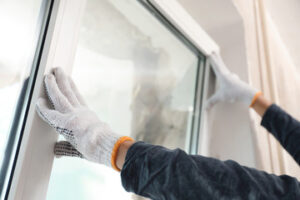When shopping for mirrors, it’s important to understand the different types available. These can vary in size, frame materials, and shape. It’s also important to consider the purpose of the mirror and what will work best in your home.

Mirrors are useful for a number of reasons, including making rooms feel larger and providing more light. They can even add a touch of elegance to your home.
When decorating a room, mirrors are a great way to create a focal point. They can be hung over a fireplace or behind a sofa, and they help to open up small spaces. They can also be used as a reflection of a light fixture or artwork, making them the perfect addition to any space.
One of the most common uses for mirrors is for personal grooming, but they can add a decorative touch to any space when positioned properly. By capturing light and displaying a distorted image, they can brighten up a living room or bedroom. They are also a great way to draw the eye upward, creating the illusion of height in a room.
They can also be framed with elaborate designs to add a touch of whimsy or drama. In addition, they can be placed on a wall to reflect beautiful outdoor views or interior greenery. This can be a nice way to bring the outdoors in, and it is also a great way to double the impact of your favorite pieces of art or plants.
When selecting a mirror for a room, it is important to consider its scale and shape. Choosing a mirror that is too small will overpower a room, while a mirror that is too large can make a space feel smaller. When hanging a mirror, it is important to leave a space of about four inches between the top of the furniture and the bottom edge of the mirror. This will allow the mirror to blend in with the room and not appear overcrowded.
Mirrors can also be a great way to hide flaws on the walls or ceiling. They can hide smudges, dings, or scratches and brighten up an area that is otherwise dark or unfinished. If you are considering using mirrors to cover up a flawed wall, be sure to choose a mirrored surface with a silver tint to maximize the reflective effect.
Mirrors can be a great addition to any space, and they can work especially well in small rooms. Hanging a large mirror above a fireplace can open up a small room and give the impression of a much larger space. Similarly, placing a mirror on a patterned accent wall can add depth and texture to a small room.
They are a great way to brighten up a room
Whether you use it to touch up your appearance or simply brighten up your living space, a mirror is a must-have for any home. But did you know that it can also do a lot more than help you look your best? The right mirror can add a pop of style to your home, enhance architectural features, and even make the room feel bigger. The trick is in choosing the right size and shape for your home. For the best results, place a mirror in front of a window or light source, which will maximize the effect of natural sunlight.
You can also use a mirror to add color to your home. A colored mirror can create an exciting effect, adding a touch of personality to your home’s decor. Experiment with different colors to see which one works best in your home. For example, a yellow mirror can bring in more sunshine and brighten up a room, while a blue-tinted mirror can cool down the room and give it a fresh, airy feel.
Mirrors are a great way to brighten up a room because they reflect light and make it seem larger. This is a simple hack that every homeowner can use to brighten up their space. It’s a great alternative to painting a room with a lighter shade of paint or using an accent wall to brighten up the space.
A large mirror is a great choice for brightening up a room because it can amplify the light coming from the windows. Placing a large mirror across from a window can also catch the reflection of the landscape outside and add a nice aesthetic to your living space. If you’re not sure where to hang a mirror, experiment with different locations and styles to see what works best for your space.
Another way to brighten up a room is by banishing colors, fabrics, and accessories that absorb light. Instead, try adding a few strategically-placed mirrors to your space. Depending on the shape, size, and orientation of the mirror, you can even extend the visual sense of your home by positioning it near doorways. This will help to tactically mask the disconnect between rooms and elongate eye-lines.
They are a great way to add texture to a room
Mirrors add texture to a room by reflecting light and enhancing the sense of space. Oftentimes, they are used as focal points, but they can also be used to create a variety of other effects in the home. They can amplify natural light, accentuate the beauty of art and furniture, or frame views. The possibilities are endless. In addition, mirrors are an inexpensive way to transform a room.
A mirror is a reflective surface that is coated with a thin layer of metal to improve its reflective ability. Typically, the metal is silver-coated but it may be any other color as well. This coating is applied by one of several methods, including electroplating, “wet” chemical deposition, and vacuum deposition. The coating is very thin and invisible to the naked eye, but it can significantly improve the reflectivity of the glass.
Any smooth and shiny surface can act as a mirror, but there are some requirements that must be met for it to work properly. The smooth surface must reflect all the light that hits it, and it must not absorb or scatter any of the light. This is why a mirror must be smooth, and not rough or uneven. If the reflection is in a straight line and single direction, it is called specular reflection. If the light is scattered in multiple directions, it is called diffuse reflection.
Another common use for a mirror is to place it opposite a window or other source of natural light. This can help brighten up a room throughout the day and make a small space feel larger. It can also create a sense of depth in a room, especially if the mirror is framed with a light tint.
There are many ways to style a mirror, and the most important thing is to find the right place for it. A mirror can be hung above a fireplace or mantelpiece to add a sense of grandeur to the room. It can also be placed in a hallway to open up the space and make it feel larger.
They are a great way to add a touch of elegance to a room
An elegant mirror can enhance the beauty of any space by bringing light and radiance into it. It can also add a sense of depth and openness to the room. Moreover, it can be used as an accent piece to complement furniture or other decorative items in the space. It can even serve as an opportunity to play with reflected angles and shapes, which can create an interesting and eye-catching visual experience.
A mirror can be a great addition to your home, but it’s important to choose the right one. You’ll want to consider the size of the room and whether you need a floor length or full-length mirror. In addition, you’ll need to think about the frame design and color. There are many different options to choose from, so you’ll need to decide what kind of look you’re going for.
You can use a mirror to make a room feel larger or smaller, depending on how it’s placed. For example, if you have a small room, you can place it near a window so that it reflects the light and makes the room feel bigger. However, if you have a large room, it’s better to hang the mirror closer to the ceiling so that it doesn’t overpower the space.
Another way to use a mirror is by placing it opposite a window to maximise natural light in the space. This can be a wonderful way to bring in the outdoors and create a bright and airy room. You can also use a mirror to highlight a particular feature in your room, such as a stunning view or a beautiful piece of art.
Mirrors can be used to accentuate any type of space, from a modern or contemporary room to a glam-style living space. They can be placed in the entryway to greet guests or in the bedroom for a bit of added privacy. Adding mirrors to your decor is an easy and affordable way to give your house a fresh new look.
Choosing the right mirror can make or break a room. A well-placed mirror can make a room look bigger and brighter, while a poorly-placed mirror can make the space seem cramped and cluttered. When choosing a mirror, be sure to take the shape into account, as round mirrors are more effective than rectangular ones in creating the illusion of space and brightness. Additionally, you should also think about the frame weight and design, as a light-weight mirror with a sculpted or dense frame will work best in larger rooms and more traditional designs.

